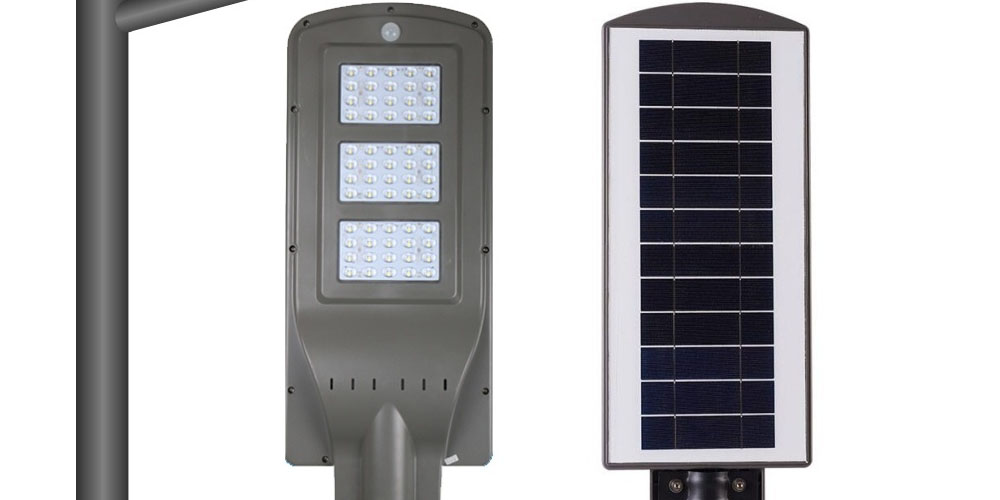Solar street lights are highly efficient light sources that utilize the sun’s energy. They are a perfect alternative to grid electric street lighting. Solar street light components include a solar panel, LED lighting fixture, pole, and battery. But note, there are different types of solar street lights which include solar all in one street light. Read on to find out the other types of solar street lights and their components.
How do Solar Street Lights Work
Solar streets are light sources raised on poles to light roads and pathways. The photovoltaic panels that power the street lights are integrated into the poles or mounted on the lighting device. The photovoltaic panels charge the in-built battery, which then powers the LED lamps. The solar panels convert heat into electrical energy, and the battery in the solar street light system stores the energy used for lighting. The lights have a battery management system with motion and night sensors. During the first few hours of the night, the street lights with average brightness and the intensity decrease till dawn unless human movement activates the motion sensor.
Solar Street Light Components
Street lights powered by solar have five major components. These include;
1. Solar Panel
It is one of the most crucial parts of solar street lights. The panel converts heat from the sun into electricity used to light the streets. Solar panels are divided into mono-crystalline and poly-crystalline, but Mono-crystalline panels have a higher rate of conversation than poly-crystalline panels.
2. Lighting Fixture
Solar street lights have LED lighting fixtures that provide higher lumens. LEDs also consume less energy than the light fixtures used in traditional street lights. Plus, LEDs do not have warm-up time; therefore, they allow the use of motion detectors for maximum efficiency.
3. Rechargeable Battery
The solar panel converts heat into electricity and stores it in the battery. During the night, the battery provides energy into the light fixture. The battery’s life cycle will determine its lifetime, while its capacity affects how many days the light can last.
4. Controller
The controller switches on and off during charging and lighting of the solar street light. Some controllers are programmable such that you can choose a suitable time for charging, dimming, or lighting.
5. Pole
Solar street lights require strong poles since some parts like batteries, panels, and fixtures are mounted on the pole. But in modern designs, all the electronics and PV panels are integrated into the pole.
Types of Solar Street Lights
There are various types of solar street lights with different specifications and light paneling. However, all these models work the same way. The four main types of solar street lights are:
1. Solar CFL
The light is highly demanded because it has a high luminous efficiency which makes it very bright. Plus, it requires minimal operational costs. The light features 12 volts DC, a 74 Wp solar PV module, and a 12/15/18/24 W capacity.
2. Solar LED
There are two variants of solar LED street lights: custom and standard. The installation process of the light is easy, and the package has refractive acrylic fittings. The model has the following specifications:
- Capacity:6/9/12/15/18/24 W
- 12 Volts DC Voltage
- 37/40/75/100/125/150 solar PV module
3. Solar Flood
They give maximum coverage of the area and have the highest luminance. If you have a larger area to cover and need fewer units, you should consider this option. The street light has a 15/18/24 W capacity, 15 volts DC voltage, and 100Ah solar PV module.
4. All in One Street Light
The solar street lights have a cable-free operation and are user-friendly. They are lighter than other models and run on a lithium battery. The model has the specifications below:
- 9/15/18/24 W capacity
- 12 Volts DC voltage
- 100Ah solar PV module
Conclusion
Solar street lights are now the most economical and sustainable way of lighting up roads, yards, and public spaces. Photovoltaic panels, LED lights, smart sensors, and an in-built battery are integrated into one compact solar unit to power solar street lights.

